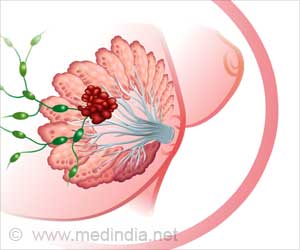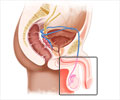Highlights:
- The effect of palbociclib drug can be predicted quickly by performing a blood test.
- This method helps to analyze the effect of the drug quickly compared to the current scanning methods.
- The mutations in PIK3CA gene can be identified by the blood test.
The study involved women with estrogen receptor positive breast cancer which is the most common kind of cancer. They all underwent clinical trials for palbociclib drug. In November 2017, the palbociclib drug was approved for use on the NHS by NICE on women who were previously not treated for advanced breast cancer.
The scientists were able to analyze the effect of palbociclib treatment by comparing the amount of PIK3CA gene present in the blood sample before and 15 days after the treatment. In the study, about 73 women who had PIK3CA mutation underwent blood tests before and after the treatment process. Out of which 52 of them received the palbociclib drug.
Effect of Palbociclib on Breast Cancer
The results showed that some women had a small decrease in PIK3CA circulating DNA after 15 days of treatment and their survival rate increased only by 4.1 months, but some of them showed a large decrease in PIK3CA and their survival rate increased by 11.2 months. Hence, this test was able to suggest a better treatment method for the women in the first group as the present treatment did not show much effect on them.
Professor Nicholas Turner, senior author and Professor of Molecular Oncology at The Institute of Cancer Research, London, and Consultant Medical Oncologist at The Royal Marsden NHS Foundation Trust, said, "Palbociclib is one of a new class of drugs that delays cancer progression for patients with advanced breast cancer, but it's not effective for everybody. The problem is we have to wait for two to three months before doing a scan to see if the therapy is working. Our new study found that a blood test for cancer DNA in the first two weeks of treatment indicated whether the drug was likely to be effective. Having an early indication of how likely a treatment is to work might allow us to adapt treatment - switching some patients to an alternative drug that is more likely to benefit them."
Dr Nathan Richardson, Head of Molecular and Cellular Medicine at the MRC, said, "It is exciting to see that using advances in diagnostic techniques, such as genetic tests for circulating tumor DNA, we may be able to more accurately define groups of patients and help us deliver the right treatment to the right patient sooner. This study provides early evidence that might help us understand sooner when a drug is successfully treating breast cancer, and if not, it can be discontinued and better approaches pursued."
Breast cancer is the most common type of cancer occurring in women and the most common symptoms of the cancer are a lump in the breast, reddening of the breast skin, inverted nipple, scaling of the skin around the nipple region and change in shape of the breast. Breast cancer can be diagnosed by different methods like biopsy, mammogram, breast examination and MRI. Treatment involves the surgical removal of either the tumor or the entire breast and radiation therapy.
Reference
- Ben O’Leary, Sarah Hrebien,James P. Morden, Matthew Beaney, Charlotte Fribbens, Xin Huang, Yuan Liu, Cynthia Huang Bartlett, Koehler, Massimo, Isaac Garcia-Murillas, Judith M. Bliss & Nicholas C. Turner. Early circulating tumor DNA dynamics and clonal selection with palbociclib and fulvestrant for breast cancer. Nature Communications, (2018)
Source-Medindia
















